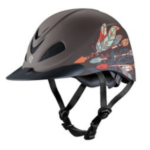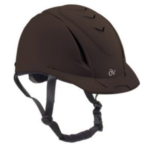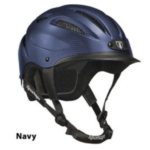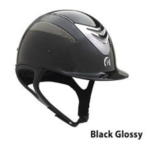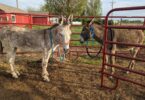Protect your noggin by knowing when (and why) it’s time to replace your favorite horse riding hat.
When should you replace your helmet? Do helmets need to be replaced? Do you even need one in the first place? With over 12,000 head injuries per year happening because of riding accidents, these questions have never been more important.
Did you know that helmets don’t last forever? In fact, you should replace your helmet every five years or after an accident where the helmet hits the ground. Beneath the surface, wear and tear can degrade the effectiveness or your outwardly “fine” helmet.
Helmets are an ingenious invention when it comes to helping prevent head injuries. Your brain is so important to being able to do what you love…and keep doing it!
Brain damage (or death) from a head injury could cause you to not be able to ride or care for your horse like he deserves.
If you already have a helmet, kudos to you! If you’re anything like me, your good ol’ helmet has now survived 6+ years of abuse, heat, cold, and maybe a couple of spills.
It still seems fine, though… or so you thought.
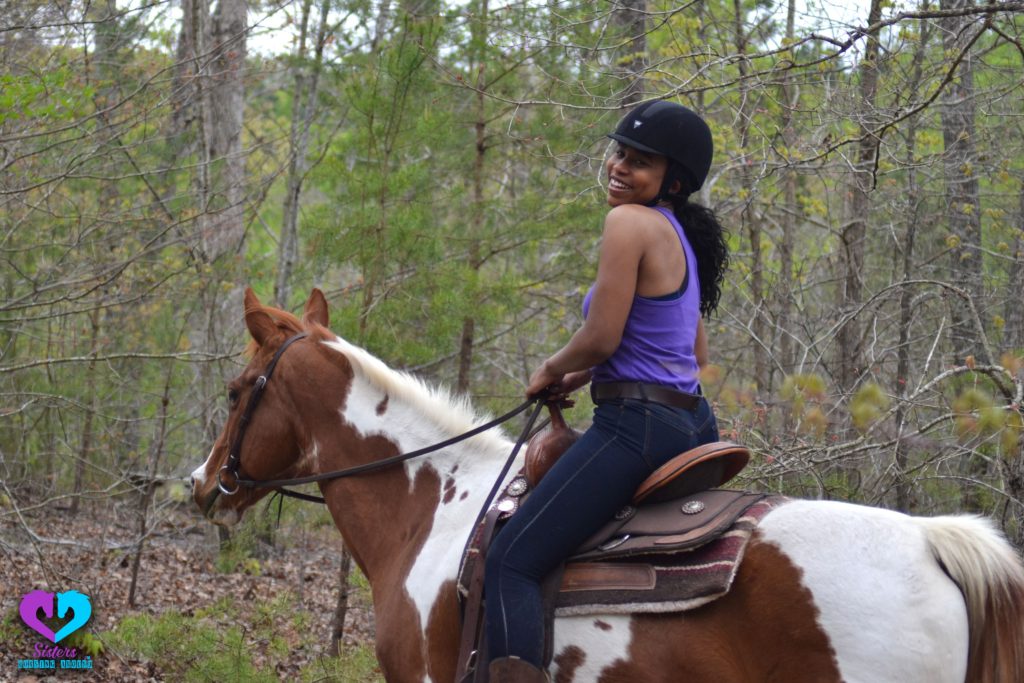
Love riding? Make sure you can keep doing it. (Photo credit: Emily Harris)
When making a decision about whether to replace you helmet:
- You should always replace your helmet after an accident or a fall where your helmet has suffered an impact (i.e., hitting the ground).
- Most manufacturers recommend replacing your helmet after 5 years of use regardless. If you’re lucky and your helmet hasn’t suffered impact after five years (because you magically tend to land on your feet!) you should still replace it.
To understand why your helmet may need to be replaced, let’s look at how helmets work.
How Brain Buckets Work:
Helmets are designed to protect you in the following ways:
- They are designed to protect your head from being cut by sharp objects such as a hoof. This is what the outer shell is for.
- The exterior is also smooth to help your head slide across the ground, which should provide you with more stopping room.
- The inner is designed to reduce the force of an impact on your skull. It’s made from foam which crushes upon impact. (If you’re still undecided about wearing a helmet, ask yourself: Can my head do these things?)
- According to eventingnation.com and the ASTM standards: “it gives your head an extra .003 second to stop on hard ground, and it provides an extra .007 or .008 of a second to stop on a softer surface like turf.”
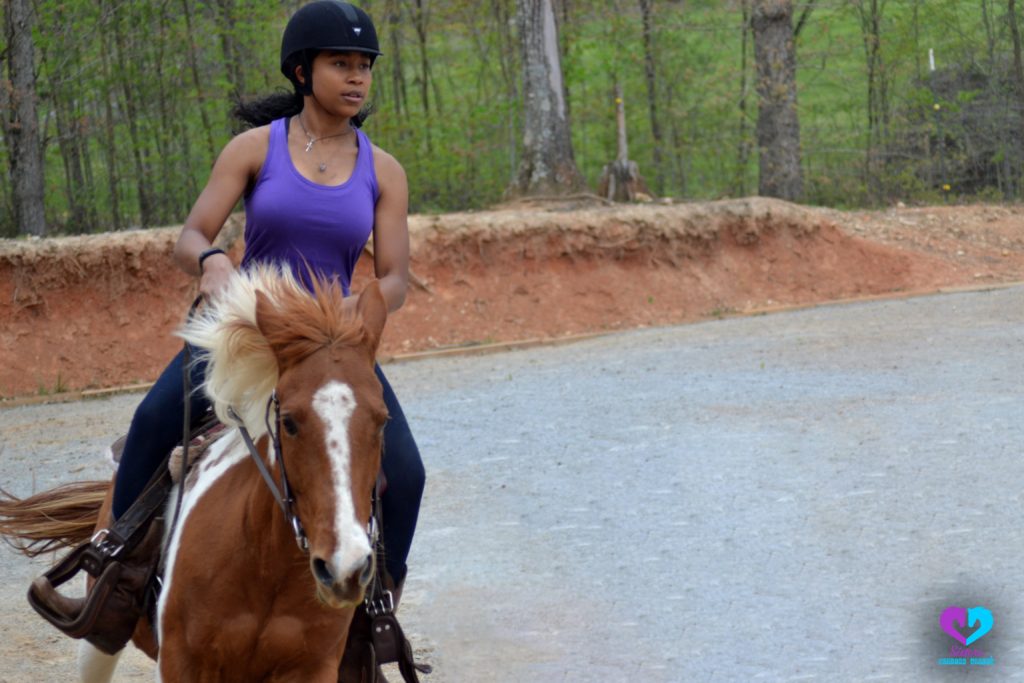
Photo credit: Emily Harris
Check out our article about why (many) Western riders don’t wear helmets — and why they ALL should!
What Happens to a Helmet in a Crash?
A helmet’s purpose is to sacrifice itself for your head (thanks helmets). When it does that, the materials inside experience the type of damage that your head probably didn’t.
If your helmet is damaged from protecting you during a fall, it served its purpose.
- The shock absorbing foam in the liner gets cracked or crushed upon impact.
- Once the foam is crushed, it stays that way, providing you with less protection when you suffer another impact.
- Even if your helmet looks fine on the outside after a fall, it’s probably not.
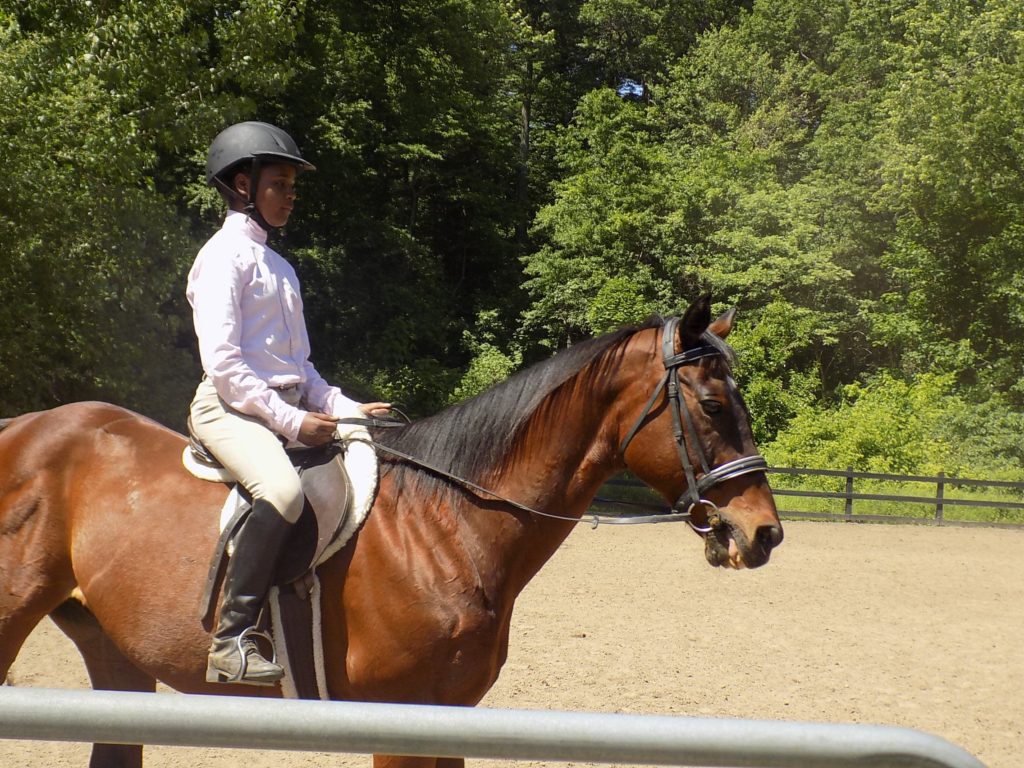
Photo Credit: Patricia Kelly
Just be grateful you’re alive to be able to replace it!
This website gives some good examples of how a helmet can be damaged, even though you can’t see the damage and exactly how much shock absorption a helmet provides after the second, third and fourth impacts.
Old Horseback Riding Helmets: They Ain’t What They Used to Be
There are other things that can damage a helmet over time and with use such as:
- Exposure to some chemicals and solvents
- Extreme heat
- Extreme cold
All of these things are harmful to the foam inside. And to be honest, how many of us haven’t let our helmets sit in the direct sun for hours at one point or another?
Even if you’re very cautious about storing your helmet in a temperature-controlled area like your house, I dare say you’ve ridden outside during extremely hot and cold weather.
After 5 years of use, your helmet liner just isn’t what it used to be and needs replaced by a helmet with new, fluffy and shock absorbing foam.
What Are Horseback Riding Helmet Replacement Programs?
Many helmet companies, such as Charles Owen and Troxel, offer helmet replacement programs for at least the first time your helmet gets damaged in an accident.
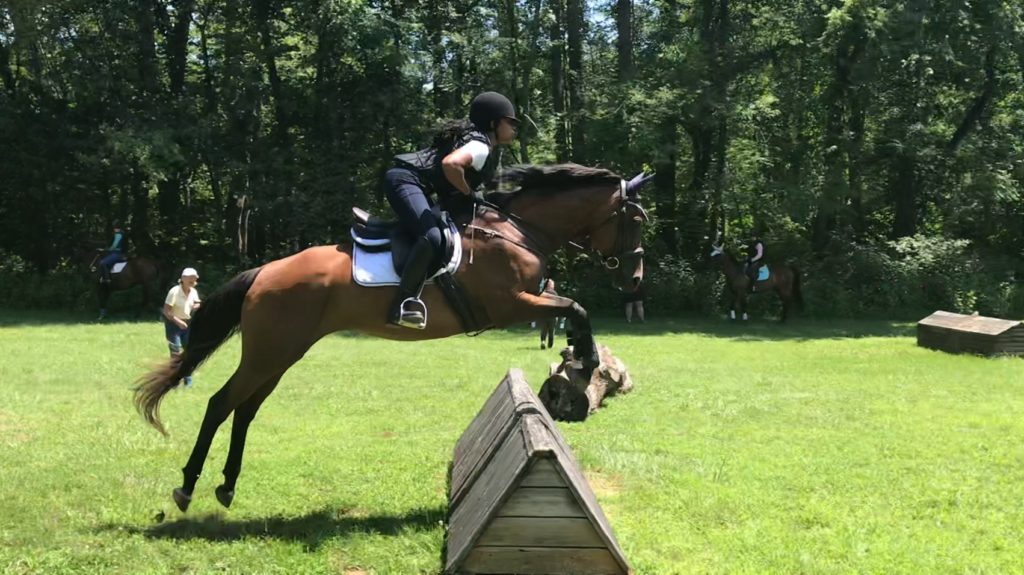
Some manufacturers offer replacement programs. (Photo credit: Emily Harris)
The guidelines are a little different for each company.
Some will replace it if the accident happens within 1 year of the purchase date. Other companies will replace it for up to 3 years from the purchase date. And, you may be required to fill out a long form about the accident details, providing pictures and maybe even a video of the accident if you have one.
If your helmet was damaged during an accident, this is definitely something to look into.
How to Choose a Horse Riding Helmet
Decisions, decisions…
Helmets can be expensive. (In the horse world, what isn’t?) But, with so many serious riding injuries being head injuries, we simply cannot take the risk of being without a helmet.
You might be saying: “my discipline doesn’t use riding helmets traditionally.” Depending on how far back you want to go, no discipline used riding helmets “traditionally” because “modern” helmets didn’t exist until around 1938.
That said, today’s ingenuity in the production of riding helmets is saving brains, and we are seeing a rise in helmet popularity in both English and Western disciplines.
Not wearing one because many people in your discipline choose not to is kind of like refusing to wear seatbelts because cars “traditionally” didn’t have them. Be the leader!
Narrowing down what type of helmet to buy can be difficult, but there are a few things you need to check when looking for a new helmet:
- Check that the helmet is SEI/ ASTM certified (the most common industry standard for how it should respond to impact.)
- Buy a NEW helmet, obviously. Why get rid of your five-year-old helmet just to buy something “gently used” off eBay?
- Make sure it fits. Here is a good YouTube video about how to fit a helmet:
Horseback Riding Helmet Certifications
This can be super confusing, so let’s clear up the confusion.
There are 3 main International Safety Standards for riding helmets and the helmet you buy should be certified with at least one, if not all three (the asterisk ones below).
Most tests include a drop from a distance onto different surfaces such as turf and cement.
Some also include a drop onto a sharp metal object to mimic a horse’s hoof and a test for how much crushing pressure the helmet can take.
- The PAS015:2011* is a current certification from the British Standards Institute. The helmet must have a protective liner all the way down to the bottom edge. Also includes a sharp object penetration test and crushing test.
- The VG1 01.040 2014-12* is a current European Standard. It preforms at a slightly lower laboratory standard than PAS015:2011*.
- The ASTM stands for American Society of Testing and Materials. Similar to the PAS015:2011 but does not include the crushing or sharp object tests.
- SEI stands for Safety Equipment Institute and is a third-party testing standard for safety equipment in a variety of sports. These letters are often seen next to the ASTM.
- The SNELL E2001 is becoming a popular certification as well. The SNELL test is new and different in that it tests a higher drop onto a flat surface, a drop onto a metal ball as well as onto a sharp edge, and a crush test that uses a greater amount of force than older tests.
- CE is a marking often seen on helmet boxes that means the helmet is compliant with health, safety and environmental standards for items sold within the European Economic Area. It doesn’t have anything to do with impact testing, but I just thought y’all might be curious.
5 Best Horseback Riding Helmets
If you don’t know quite where to start on your search for a new helmet, here are five reputable brands to check out:
Troxel: If you are looking to save money but still have an ultra-safe helmet, Troxel is a great way to go! It makes your head look a bit large, but the helmets come in fun and artistic designs.
They even manufacture a few helmets specifically for western riders. All of their helmets are SEI/ASTM certified.
Check out Troxel helmets on StateLineTack.com
Charles Owen: These are great looking helmets geared towards English riders from a brand that has been making helmets for a long time.
Some of their helmets have up to 4 certifications including: SEI/ASTM, VG1 01.040 2014-12, PAS015:2011 and SNELL.
Check out their most affordable model on Amazon
Ovation: These helmets are generally very aesthetically pleasing and are low profile. Many come in a variety of fun colors, making them versatile for both English and Western riders.
They also sell different colors and patterns of helmet “zocks” that you can slip over any helmet for a little pizzazz. They are certified with SEI-ASTM.
Check out a great basic Ovation helmet on StateLineTack.com
Tipperary: This company pretty much carries one model with variations. It’s a very sleek performance helmet designed with the eventer in mind. It’s the perfect helmet for riders in high-speed sports such as cross country and barrel racing.
The Tipperary Sportage is SEI-ASTM certified. They also carry a variety of body protectors.
Check out the classic Tipperary helmet on StateLineTack.com
One K: Most of their helmets are certified by the SEI/ASTM and CE EN. These helmets come in basic black and gray designs.
They have some iridescent green and silver designer helmets that would look quite fashionable on a Western rider, as well as English. This company’s helmets sell for upwards of $200 usually.
Check out One K helmets on StateLineTack.com
Frequently Asked Questions
Q: What should you do with your horse riding helmet after a fall?
If you hit your head on the ground, get rid of it and replace it.
If your helmet has made impact with the ground, it’s likely that the foam lining is crushed or cracked and will never regain its shock absorbing abilities.
Q: What should you do with old riding helmets?
You should throw it away, since it is no longer safe for riders to use. Cutting the chin strap off first is also a good idea, so no one finds it and wears it by mistake.
If that sounds too wasteful, the old helmets can become hanging flower baskets or some other fun DIY craft.
Q: Do horseback riding helmets expire?
Five years from the purchase date is a great “rule of thumb” for replacing your helmet, as five years of use and extreme temperature exposures leads to the breakdown of the foam lining, hindering its shock absorbency.
Q: How long do horseback riding helmets last?
Without having suffered any impact that would damage the foam lining, about five years on average.
Q: How do I check my safety helmet expiry date?
Look at the manufacture (MFG) date on the tag, then add five years. If it was manufactured five years ago, it’s a safe bet you should get a new one.
Q: What are helmet replacement programs?
It’s a program where the company replaces a relatively new helmet if it’s damaged in an accident.
Most will only replace a helmet within the first 1-3 years after you purchase it. They also need you to fill out a form stating the specifics of the accident.
Q: Can we have a few laughs about this serious topic?
Funny you should ask… yes! Professional trainer and equestrian vlogger Shelby Dennis created a hilarious parody video about wearing helmets.
Remember, SHE IS KIDDING!
Horse Riding Helmets Infographic
You’re welcome to use this infographic on your own website *as long as you link back to horse-rookie.local.*
Feel free to share on Pinterest, as well by hovering over it and clicking the Pinterest icon. #knowledgeishorsepower

Remember to replace your horse riding helmet every five years.
Bottom Line: Protect Your Mellon
If you love horses and riding, wearing a helmet is the best way to keep doing it.
Remember, though, that even helmets that still appear to be in good shape actually “expire.” Be sure to replace your horseback riding helmet at least every five years.
Better safe than sorry!
P.S. Enjoy this article? Trot on over to:
- 10 Best Horse Riding Helmets (Dressage, Jumping, etc.)
- Tot to Trot: 5 Best Riding Helmets for Toddlers
- 8 Best Horse Riding Helmets for Hot Weather Relief
- Horseback Riding Safety Equipment That’s Worth Every Penny
- Why Western Riders Don’t Wear Helmets
- Horseback Riding: What to Wear (With Pictures)
- Hit-Air Vest Review: My Favorite Fall in 30 Yrs.
Further Reading:
-
https://www1.agric.gov.ab.ca/$department/deptdocs.nsf/all/aet12574
-
https://eventingnation.com/craniology-part-i-what-your-helmet-will-and-wont-do-to-protect-you/
-
https://www.riders4helmets.com/when-should-i-replace-my-helmet-expiration-dates/
-
https://www.charlesowen.com/
https://www.cheshirehorse.com/blog/2014/07/when-its-time-to-replace-your-helmet/


